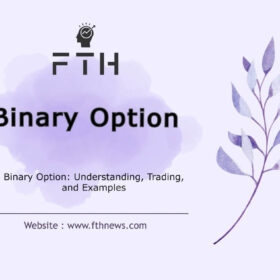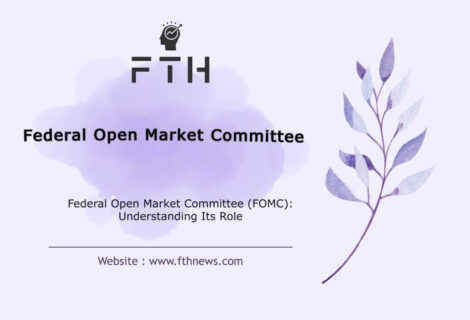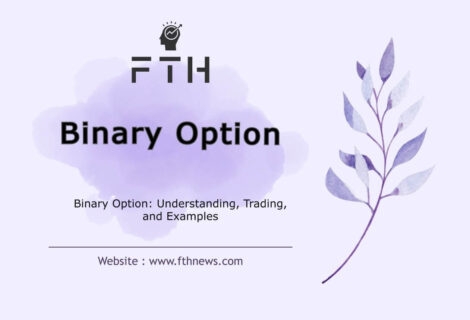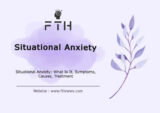
Fear & Greed Index: What Is It, How It Works, Pros and Cons
Understanding the dynamics of financial markets is a crucial aspect of successful trading and investing. Among the various indicators influencing market behavior, the Fear and Greed Index stands out as a powerful tool to gauge the sentiments and tendencies of market participants. In this comprehensive guide, we will delve into the concept of the Fear and Greed Index, its significance, categorization, calculation, and its application in both traditional and cryptocurrency markets. Whether you are a seasoned trader or a novice investor, unlocking the insights behind the Fear and Greed Index is key to navigating the complexities of the financial landscape.
What is the Fear and Greed Index?
Changes in financial markets are driven by the reactions and emotions of traders to market conditions. At the heart of deciphering these emotional currents lies the Fear and Greed Index, a pivotal analytical tool designed to measure the prevailing sentiments among market participants. It goes beyond the numbers and charts, providing traders with profound insights into the intricate world of market psychology.
The Fear and Greed Index acts as a barometer for the emotional temperature of the market. It encapsulates the collective fear and greed experienced by traders, reflecting the ebb and flow of market sentiment. This index is not merely a numerical representation; it’s a window into the psyche of investors, offering a glimpse into their decision-making processes.
Why is the Fear and Greed Index Essential?
In the ever-evolving landscape of financial markets, the Fear and Greed Index plays a pivotal role in decision-making. It serves as a compass for professional traders who navigate the volatile seas of market conditions. By understanding the prevailing sentiments, traders gain a crucial edge in anticipating potential market shifts.
Professional traders seamlessly integrate the Fear and Greed Index into their analytical arsenal, aligning it with technical and fundamental analysis tools. This holistic approach enables them to create a more comprehensive view of market dynamics, empowering them to make informed decisions.
As markets fluctuate, the Fear and Greed Index acts as a guiding light, helping traders identify opportune moments for entry or exit. Its significance lies not only in its numerical value but in its ability to unveil the emotional undercurrents that drive market movements.
Anticipating the Future State of the Market
The Fear and Greed Index is not just a reflection of current sentiments; it’s a forward-looking indicator. Professional traders utilize it as a crystal ball of sorts, foreseeing potential market trends and adjusting their strategies accordingly.
When combined with technical analysis tools, the Fear and Greed Index becomes a powerful ally in predicting the future trajectory of the market. As the index oscillates between fear and greed, astute traders can position themselves strategically, preparing for shifts in market dynamics.
In essence, the Fear and Greed Index is more than a numerical metric – it’s a strategic ally for traders navigating the unpredictable waters of financial markets. Its insights into market psychology are invaluable, making it an indispensable tool for those seeking to master the art of trading and investing.
Understanding the Fear and Greed Index
The Fear and Greed Index, born in the realm of traditional stock markets, has undergone a transformative evolution with the burgeoning influence of the digital currency market. Originally crafted by CNNMoney, this index has adapted to the ever-changing financial landscape, providing valuable insights not only for conventional assets but also for the dynamic world of digital currencies. The Crypto Fear and Greed Index, a brainchild of Alternative.me, stands as a testament to this adaptation, offering a nuanced perspective on market sentiments within the cryptocurrency space.
Evolution in the Digital Currency Market
As the digital currency market gained prominence, the need for a specialized sentiment analysis tool became apparent. The Crypto Fear and Greed Index emerged to fulfill this role, catering to the unique dynamics and emotions prevalent in the cryptocurrency realm. Alternative.me recognized the evolving nature of the market and tailored the Fear and Greed Index to encompass the complexities of digital assets.
Analyzing Trends and Indicators
The Crypto Fear and Greed Index takes on the role of a meticulous observer, delving into multiple trends and market indicators to decipher the prevailing sentiment – fear or greed. Unlike a mere numerical value, this index synthesizes diverse market elements, offering a comprehensive outlook on the emotional state of cryptocurrency investors.
A Scale of Emotions
The Fear and Greed Index for both traditional and digital markets operates on a scale that speaks volumes about market sentiments. A reading of 0 signifies extreme fear, indicating a potential undervaluation of assets and a heightened level of caution. Conversely, a score of 100 signals extreme greed, hinting at an exuberant market where investor optimism may be reaching unsustainable levels. The neutral ground rests at 50, reflecting a balanced equilibrium between fear and greed.
Understanding these thresholds is crucial for traders and investors, as extreme fear might present buying opportunities, while extreme greed could signal an overheated market due for a correction.
Practical Application
For traders navigating the cryptocurrency landscape, the Crypto Fear and Greed Index serves as a compass. It guides decisions, offering a real-time assessment of the emotional undercurrents shaping market movements. This practical application of sentiment analysis becomes particularly vital in a market known for its rapid fluctuations and the influence of investor emotions.
In conclusion, the Fear and Greed Index, adapted for the digital currency age, encapsulates the essence of market sentiments. It goes beyond traditional numerical readings, providing a holistic view of emotions that drive both traditional and digital asset markets. Whether you are exploring the realm of stocks or diving into the cryptocurrency space, understanding and utilizing the Fear and Greed Index empowers you to navigate the complexities of ever-evolving financial landscapes.
Categorization of Fear and Greed Index
Understanding the Fear and Greed Index extends beyond numerical readings; it involves decoding the emotional landscape of market participants. The categorization of this index provides a nuanced framework for investors and traders, helping them navigate the complex interplay of fear and greed within the market. Let’s delve into each category:
Extreme Fear (0-25):
Intensity of Fear: This category signifies an atmosphere of intense fear among sellers. The index reading of 0-25 serves as a red flag, suggesting potential undervaluation of assets. Investors may interpret this as a moment of opportunity, as the market sentiment may be overly pessimistic, leading to potential buying opportunities.
Fear (25-50):
Cautious Sentiment: In the range of 25-50, the Fear and Greed Index signals the presence of fear among investors. This bracket reflects a cautious market sentiment, where investors may be treading carefully. While not reaching extreme levels, this range suggests that apprehension is influencing decision-making, requiring a vigilant approach to market dynamics.
Neutral (50):
Balanced Equilibrium: A reading of 50 indicates an equilibrium between fear and greed, portraying a balanced market sentiment. This neutral ground suggests a state where neither fear nor greed dominates, offering investors a moment of pause and reflection. It signifies a market at rest, awaiting potential catalysts that may sway sentiment in either direction.
Greed (50-75):
Increased Appetite: As the index climbs into the 50-75 range, it points towards an increased sense of greed among traders. This surge in greed can be a double-edged sword, potentially leading to market bubbles. Investors need to exercise caution, as exuberant optimism may drive prices to unsustainable levels, warranting a vigilant approach to risk management.
Extreme Greed (75-100):
Market Exuberance: The pinnacle of the Fear and Greed Index, the 75-100 range, reflects a market saturated with greed. This territory is often associated with unrealistic price increases and market exuberance. While this phase may yield profitable opportunities, investors should be wary of potential corrections and prioritize a prudent approach to avoid the pitfalls of irrational exuberance.
Interpreting Emotional Signposts: The categorization of the Fear and Greed Index serves as a compass for market participants. Traders and investors can use these emotional signposts to gauge the prevailing sentiments and tailor their strategies accordingly. Each category provides valuable insights into the collective mindset of market participants, empowering individuals to make informed decisions in the face of dynamic market conditions.
In essence, the Index categories act as a guide, helping market participants navigate the emotional currents of fear and greed, fostering a more comprehensive understanding of market psychology.
Mechanics of the Fear and Greed Index
The Fear and Greed Index, a sophisticated creation of CNN Business, operates as a finely tuned instrument, dissecting the intricate dance of market dynamics. Its functionality relies on seven key indicators, each serving as a compass in deciphering the collective sentiments of investors. Let’s unravel the mechanics of how this index operates:
Stock Price Momentum:
S&P 500 vs. 125-day Moving Average: This indicator measures the momentum of the S&P 500 in relation to its 125-day moving average. It provides insights into the overall trend direction, aiding in the assessment of the market’s momentum.
Stock Price Strength:
52-Week Highs vs. Lows on NYSE: Examining the number of stocks reaching 52-week highs versus those hitting 52-week lows on the New York Stock Exchange (NYSE). This offers a snapshot of the strength and breadth of the market’s upward or downward movements.
Stock Price Breadth:
Trading Volumes in Rising vs. Declining Stocks: Analyzing the trading volumes in rising stocks against declining stocks. This indicator provides a deeper understanding of the breadth of market movements, shedding light on the participation of investors.
Put and Call Options:
Options Market Dynamics: Evaluating the balance between put options and call options. A dominance of put options may signify fear, while an abundance of call options may indicate greed. This dynamic insight is crucial for understanding investor sentiment in the options market.
Junk Bond Demand:
Spread between Yields on Investment-Grade and Junk Bonds: Measuring the spread between yields on investment-grade bonds and junk bonds. This provides an indication of risk appetite, with a wider spread suggesting a higher demand for higher-risk assets.
Market Volatility:
Cboe’s Volatility Index (VIX) based on a 50-day MA: Utilizing the Cboe’s Volatility Index (VIX) based on a 50-day moving average (MA). This gauge of market volatility helps in understanding the level of uncertainty prevailing in the market.
Safe Haven Demand:
Difference in Returns for Stocks vs. Treasuries: Examining the difference in returns for stocks compared to treasuries. This indicator assesses the demand for safe-haven assets during periods of market turbulence.
Historical Insights of Fear and Greed Index
The Fear and Greed Index has transcended its role as a mere numerical tool; it has become a reliable harbinger of market turns. Its historical insights offer a retrospective view of pivotal moments, showcasing its efficacy as an indicator of market sentiment.
During the 2008 financial crisis, the Fear and Greed Index plumbed significant lows, mirroring the widespread fear and uncertainty that gripped the markets. In contrast, during optimistic periods, such as in 2012 and 2020 amid the COVID-19 pandemic, the index soared to peaks, reflecting the prevailing greed and heightened investor optimism.
These historical waypoints not only attest to the index’s reliability but also highlight its utility in providing valuable foresight to investors navigating the unpredictable terrain of financial markets. The Index stands not only as a testament to past market dynamics but as an invaluable tool for anticipating future turns in the market’s intricate dance.
The Fear and Greed Index in Cryptocurrency Markets:
In the ever-evolving landscape of digital currencies, the traditional Fear and Greed Index has found a tailored counterpart in the form of the Crypto Fear & Greed Index, courtesy of Alternative.me. This crypto-centric index dives deep into the unique nuances of the cryptocurrency market, offering crypto enthusiasts and traders a specialized tool for understanding the ebbs and flows of digital sentiments.
Introduction to Crypto Fear & Greed Index
Alternative.me stepped into the crypto realm with a foresighted approach, recognizing the need for a sentiment analysis tool specific to digital currencies. The Crypto Fear & Greed Index was conceived, incorporating a diverse set of factors that resonate with the intricacies of the crypto space. Unlike its traditional counterpart, this index delves into the multifaceted dynamics of the cryptocurrency market, providing a more nuanced perspective on investor sentiments.
Factors Considered in the Crypto Fear & Greed Index
The Crypto Fear & Greed Index is not confined to the traditional indicators alone; it goes beyond, encapsulating the unique characteristics of the cryptocurrency market. Here’s a breakdown of the factors it considers:
- Price Volatility over 30 and 90 Days:
- Studying Market Uncertainty: Analyzing the price volatility of Bitcoin over the past 30 and 90 days, this factor gauges the uncertainty prevailing in the market. Higher volatility suggests increased unpredictability.
- Market Volume and Momentum:
- Measuring Buying and Greed: Assessing the current trading volume of Bitcoin and combining it with the average of the last 30 and 90 days, this factor indicates the level of buying activity and the prevailing greed in the market.
- Social Media Mentions:
- Gauging Investor Sentiment: Scrutinizing various hashtags related to Bitcoin on social media, especially Twitter, this factor measures the interactions and mentions. A higher number of interactions suggests that greed has surpassed fear in the market.
- Bitcoin Market Cap Dominance:
- Reflecting Investor Preference: This factor examines the dominance of Bitcoin in the overall digital currency market. A higher dominance indicates investor preference for Bitcoin over other cryptocurrencies.
- Google Trends Data:
- Understanding Public Interest: Analyzing Google Trends data for Bitcoin-related searches, this factor provides insights into public interest. For instance, an increase in searches related to potential scams may indicate fear in the market.
Practical Application for Crypto Traders
For crypto traders navigating the often turbulent seas of digital currencies, the Crypto Fear & Greed Index becomes an invaluable companion. This specialized tool aids traders in deciphering market sentiments, providing a real-time assessment of the emotional undercurrents influencing digital asset prices.
By understanding the unique factors considered in this crypto-tailored index, traders can make more informed decisions, whether it’s identifying potential buying opportunities during periods of fear or exercising caution in the face of market exuberance. The Crypto Fear & Greed Index stands as a testament to the evolving nature of financial markets, adapting to the distinct characteristics of the cryptocurrency space and empowering traders with insights to navigate this dynamic landscape.
Using the Fear and Greed Index in Trading:
For traders seeking to navigate the intricate dance of market sentiments, the Fear and Greed Index emerges as a pivotal ally, offering valuable insights to inform strategic decision-making. As the index oscillates between extremes, astute traders can employ specific strategies tailored to the prevailing emotional undercurrents, enhancing their ability to seize opportunities and manage risks effectively.
Strategies for Traders: Navigating the Emotional Spectrum
- Extreme Fear (0-25):
- Patience is a Virtue: In times of extreme fear, indicated by an index reading of 0-25, exercising patience may be the wisest strategy. Holding off on purchases during this period allows traders to gauge the depth of market pessimism. This strategic restraint positions traders to capitalize on potential undervaluation opportunities that often arise when fear reaches its zenith.
- Fear (25-50):
- Vigilant Observation: As the Fear and Greed Index moves into the fear zone (25-50), traders should adopt a vigilant stance. This range suggests a cautious market sentiment, prompting traders to observe and analyze market dynamics carefully. While not reaching extreme levels, fear may influence decision-making, requiring traders to be discerning in their approach.
- Neutral (50):
- Balanced Consideration: A neutral reading at 50 signifies equilibrium between fear and greed. Traders can take this moment of balance to consider their strategies. It’s a period for reflection, where decisions can be based on a comprehensive assessment of market conditions, unswayed by extreme emotional biases.
- Greed (50-75):
- Strategic Asset Management: As the index enters the greed zone (50-75), traders should approach with caution. Increased greed among traders may lead to market bubbles and unrealistic price increases. Strategic asset management becomes crucial during this period, with considerations for potential profit-taking and risk mitigation.
- Extreme Greed (75-100):
- Risk Mitigation and Vigilance: In the realm of extreme greed (75-100), traders should exercise heightened vigilance. This phase often accompanies unrealistic price peaks and exuberant market conditions. Mitigating risks, considering profit-taking strategies, and adopting a prudent approach to asset allocation are essential steps for traders navigating this euphoric phase.
Short and Medium-Term Sentiment Analysis:
The Fear and Greed Index serves as a dynamic tool for short and medium-term sentiment analysis. Traders can align their strategies with the prevailing emotional landscape, adapting to changing market conditions. Whether it’s seizing opportunities during extreme fear or exercising caution amid exuberant greed, the index acts as a compass, guiding traders through the ever-shifting tides of market sentiments.
In essence, using the Fear and Greed Index in trading is not just about reacting to numerical values; it’s about adopting tailored strategies that align with the emotional spectrum of the market. Traders who master this art of emotional intelligence gain a distinct edge, allowing them to navigate the complexities of financial markets with strategic finesse.
Advantages of the Fear and Greed Index:
Pros:
- Complementary Analysis: The Fear and Greed Index shines as a valuable addition to a trader’s analytical toolkit. When combined with fundamental and technical analysis, it enhances the depth of market understanding, providing a more holistic view of potential market movements.
- Timing Precision: For traders seeking optimal entry and exit points, the index acts as a strategic guide. It aids in identifying opportune moments for buying and selling, leveraging the emotional ebbs and flows of the market to one’s advantage.
- Emotional Control: The Fear and Greed Index is not just a numerical metric; it’s a psychological compass. By using this tool, traders gain better control over their emotional reactions during the tumultuous journey of trading. It acts as a stabilizing force, preventing impulsive decisions driven by market hysteria.
Disadvantages of the Fear and Greed Index:
Cons:
- Incomplete Predictive Power: While the Fear and Greed Index is a potent tool, it cannot predict all the nuanced factors causing market changes. External events, unforeseen developments, or sudden shifts in global dynamics may influence markets beyond the predictive scope of the index.
- Dominance of Economic Factors: Economic fundamentals often take precedence in shaping market trends. The Index, while insightful, cannot fully replace the impact of broader economic factors that drive sustained market movements.
- Challenges for Long-Term Investors: Prolonged reliance on the Fear and Greed Index may pose challenges for long-term investors. In markets characterized by enduring trends, the short to medium-term focus of the index may not align seamlessly with the investment horizon of those seeking long-term asset growth.
Navigating the Balance:
Understanding the advantages and limitations of the Fear and Greed Index is pivotal for traders seeking to strike a balance in their decision-making processes. While it serves as a potent ally in gauging market sentiments and optimizing short to medium-term trades, it is not a standalone solution. The most effective strategies often emerge from a harmonious blend of analytical tools, allowing traders to navigate the complexities of financial markets with agility and foresight.
Calculating the Fear and Greed Index:
In the dynamic realm of digital currencies, where market sentiments ebb and flow, the Fear and Greed Index takes shape through a meticulous calculation process. Understanding the intricate dance of market fluctuations, Bitcoin dominance, and social media dynamics, the index employs a set of weighted factors to distill the collective emotional pulse of the cryptocurrency market.
Factors in the Stock Fear and Greed Index:
- Stock Price Momentum (14.29%):
- Equity Momentum: In the stock market, momentum is assessed by comparing the S&P 500 to its 125-day moving average. This factor contributes 14.29% to the index, offering insights into the momentum of the overall equity market.
- Stock Price Strength (14.29%):
- Highs and Lows: Reflecting 14.29%, this factor compares the number of stocks hitting 52-week highs to those hitting 52-week lows on the New York Stock Exchange (NYSE). It gauges the strength of stock prices.
- Stock Price Breadth (14.29%):
- Volume Analysis: Analyzing trading volumes in rising stocks versus declining stocks, this factor, contributing 14.29%, provides insights into the breadth of stock price movements.
- Put and Call Options (14.29%):
- Options Market Dynamics: Reflecting investor sentiment in the options market, this factor, contributing 14.29%, assesses the extent to which put options lag behind or surpass call options.
- Junk Bond Demand (14.29%):
- Risk Appetite: This factor, accounting for 14.29%, measures the spread between yields on investment-grade bonds and junk bonds, reflecting investor risk appetite.
- Market Volatility (14.29%):
- VIX Analysis: The volatility index (VIX) based on a 50-day moving average contributes 14.29%, providing a measure of market volatility specific to the stock market.
- Safe Haven Demand (14.29%):
- Stocks vs. Treasuries: Comparing returns for stocks versus treasuries, this factor, contributing 14.29%, gauges the demand for safe-haven assets.
Interpreting the Nuances:
While both indices share the common thread of assessing market sentiments, the differences in their factors reflect the unique dynamics of the cryptocurrency and stock markets. The Crypto Fear and Greed Index delves into the volatility and community-driven nature of the crypto space, while the Stock Fear and Greed Index incorporates traditional market indicators and dynamics specific to equities. Understanding these nuanced differences equips investors with a more comprehensive grasp of the emotional landscapes in which they navigate.
Factors in the Crypto Fear and Greed Index:
- Market Volatility (25%):
- Measuring Uncertainty: Market volatility, comprising a significant 25% of the index, scrutinizes the fluctuations in Bitcoin’s price over the past 30 and 90 days. This factor serves as a barometer of uncertainty, reflecting the level of unpredictability prevalent in the market.
- Volume and Acceleration (25%):
- Gauging Market Momentum: Accounting for another 25%, this factor delves into the current trading volume of Bitcoin, juxtaposed against the averages of the last 30 and 90 days. Elevated trading volumes signal heightened buying activity, contributing to the prevailing market momentum.
- Social Media Impact (15%):
- Quantifying Interactions: Social media, a powerful force in the crypto landscape, contributes 15% to the index. The impact is measured by examining various hashtags related to Bitcoin on platforms like Twitter. A surge in interactions signals a shift from fear to greed, influencing the market sentiment.
- Bitcoin Dominance (10%):
- Assessing Preference: Reflecting 10% of the index, Bitcoin dominance evaluates how much Bitcoin has conquered the broader digital currency market. A higher dominance indicates a preference for Bitcoin, with funds potentially flowing from other digital currencies to the market leader.
- Google Trends (10%):
- Capturing Public Interest: Google Trends, constituting 10%, offers insights into public interest regarding Bitcoin-related searches. Patterns such as increased searches for potential scams might indicate heightened fear in the market.
Weighted Calculation Process:
Each of these factors plays a pivotal role in shaping the overall sentiment captured by the Fear and Greed Index. The process involves assigning weights to these factors based on their significance in influencing market emotions. These weights guide the derivation of the final index, ranging between 0 and 100.
Interpreting the Index Value:
- A reading of 0-24 signifies extreme fear, implying potential undervaluation of assets.
- A range of 25-49 indicates fear, reflecting cautious sentiments among investors.
- A value of 50 denotes neutral territory, where fear and greed are balanced.
- A span of 50-74 signals greed, showcasing an increased appetite for risk among traders.
- An index value of 75-100 represents extreme greed, often associated with irrational exuberance and unrealistic price increases.
In essence, the calculation of the Fear and Greed Index goes beyond numerical precision; it encapsulates the essence of market sentiments, providing traders with a dynamic tool to navigate the ever-changing landscape of digital currencies.
The Significance of the Fear and Greed Index:
In the fast-paced realm of financial markets, where every moment counts, the Fear and Greed Index emerges as a beacon, offering investors and traders a swift and insightful snapshot of prevailing market trends. Its significance lies in its ability to distill complex market sentiments into a concise numerical value, enabling quick decision-making and strategic alignment with the ever-evolving landscape.
Unlocking Investment Opportunities:
- Dynamic Insights: The Fear and Greed Index serves as a dynamic indicator, capturing the ebb and flow of market emotions. Sudden changes in the index, whether shifting from fear to greed or vice versa, provide investors with immediate insights into the evolving mood of the market.
- Valuable Investment Opportunities: These abrupt shifts in the index are not merely numerical fluctuations; they represent windows of opportunity. Understanding these changes can unveil valuable investment prospects, allowing astute investors to position themselves strategically in response to the evolving market sentiment.
Strategic Alignment with Market Sentiments:
- Informed Decision-Making: The Fear and Greed Index acts as a compass, guiding traders and investors in their decision-making processes. By providing a quick overview of market sentiments, it empowers individuals to make informed decisions aligned with the prevailing emotional undercurrents.
- Adaptability in Real Time: Financial markets are dynamic, and swift adaptations to changing conditions are paramount. The Index facilitates real-time adaptability, enabling traders to adjust their strategies promptly based on the latest emotional cues from the market.
Reading the Market Pulse:
- Sudden Changes as Signals: Sudden changes in the Fear and Greed Index are akin to market signals. A sharp drop may indicate a shift towards fear, potentially signaling undervalued assets. Conversely, a rapid increase may denote growing greed, prompting a closer examination of potential bubbles or overvalued conditions.
- Benchmark for Sentiment Analysis: The Index serves as a benchmark for sentiment analysis. Traders can compare their own assessments of market sentiment with the index, validating or refining their perspectives based on this widely recognized metric.
Conclusion
In conclusion, mastering the Fear and Greed Index empowers traders and investors with valuable insights into market sentiments. By understanding the index’s categorization, calculation, and application, individuals can make informed decisions, navigate market fluctuations, and enhance their overall financial success. Remember, while the Fear and Greed Index is a powerful tool, combining it with diverse analytical approaches ensures a comprehensive understanding of market dynamics.














